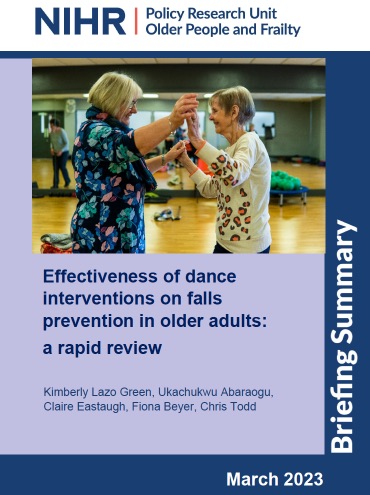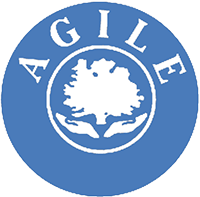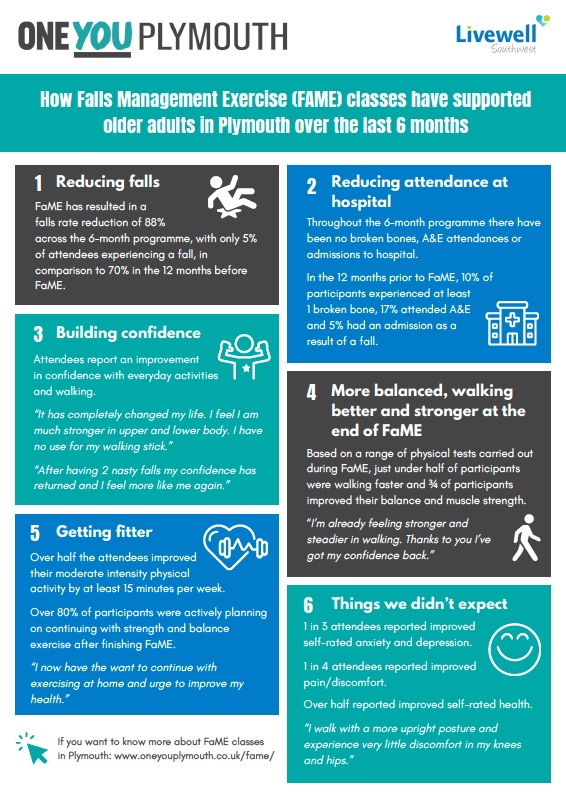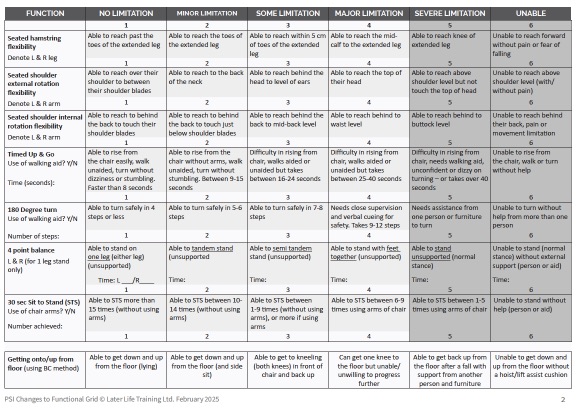The Older People and Frailty Policy Research Unit were requested by the Department of Health and Social Care (DHSC) to examine whether dance-based interventions are effective in preventing falls, reducing risk of falls, or preventing fear of falls in older adults, and to provide an overview of the evidence for cost-effectiveness of dance-based interventions for falls prevention amongst older people.
The recent NHS England ‘Going further for winter: community-based falls response’ highlights the importance of falls prevention for the NHS following the COVID-19 pandemic.
The evidence from the review will be used to indicate whether the NHS and social/leisure care services should be advised to invest in dance-based interventions rather than traditional strength and balance interventions.
The Executive Summary of the review set the scene
“… there is a strong evidence base that strength and balance exercise programmes are effective at reducing falls. There have been a number of different systematic reviews and the most recent Cochrane review of randomised controlled trials (RCTs) investigating exercise interventions for falls prevention reports falls reduction of 23% to 31% depending in part on who delivers the strength and balance programme. This review includes only one RCT of a dance programme, and found that dance may increase falls, comparing poorly to the strength and balance interventions reviewed.
Nonetheless dance has been put forward as an alternative approach to falls prevention. It is argued that dance is an enjoyable and sociable form of exercise in comparison to more formal exercise, thus enhancing both uptake and adherence. However, it should be noted that strength and balance programmes are often delivered so as to provide sociable and enjoyable session which engage the older people participating.”
What did the review show?: The review found 48 primary studies and 23 of these were the gold standard randomised controlled studies which have least bias (more robust). These were categorised into different types of dance (ballroom and latin, cultural, danced based exercise, dance based therapy, dance based exergames and low impact dance). They assessed the quality of the studies using a risk of bias tool. They concluded that most studies were at moderate to high risk of bias and so considerable caution needs to be taken in drawing conclusions from them. None of the high quality RCTs had any effect on falls rates, although only one actually measured falls and showed no effect, the rest looked at risk factors for falls (or proxy markers) such as balance and strength. Most studies showed improvement in general physical and mental health and some of the measured proxy markers. Of all the studies which measured falls, only half showed any effect and these were low quality studies. Cost-effectiveness has not been shown.

Review conclusions:
Dance may provide benefits to older people who take part, but at present there is insufficient evidence to recommend any form of dance as an alternative to strength and balance training, if the aim is to prevent falls. Investment in dance for falls prevention is not currently indicated.
The full review can be found here – https://www.opfpru.nihr.ac.uk/our-research/rapid-responses/
Executive Summary, Briefing Summary, Full Report
What do LLT think of this review?:
Here at LLT, we believe dance has a place in the continuum of exercise and physical activity that supports older adults ageing well. Choices and preferences are important to ensure the widest reach and engagement. Some people prefer structured exercise, some prefer exercising alone, some prefer dance to structured exercise, or visa versa. There is a need for choice and in the continuum of falls prevention (from prevention to management), it is important that the choices offered can help improve or at least maintain someones balance and strength.
Health professionals, exercise professionals and dance professionals all form part of the continuum of falls prevention, but will be working with individuals at different times in their recovery, rehabilitation, and/or longer-term prevention aims. Dance has a place in primary prevention of falls by helping older people maintain an active lifestyle in an activity they enjoy. Dance also has a place when people move on from specific targeted falls prevention programmes as we know that benefits gained in these may be lost if people do not remain active. We have previously issued guidance on dance in the falls prevention continuum as we worked with Dance to Health to train up their dance choreographers in FaME and Otago, so that principles of these evidence based and effective programmes could be incorporated into their dance activity, and as a choice for people to move on to after their structured exercise programmes, to ensure continuity of the components of fitness needed to maintain gains made in their ‘treatment’ programme, or as an activity that may prevent them transitioning into frailty and increased falls risk.







